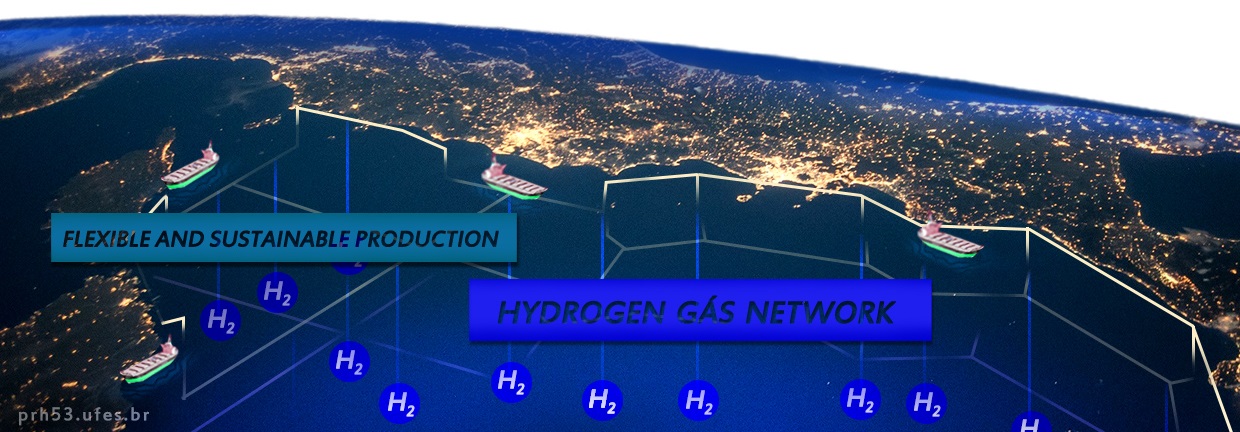
An energy alternative that has been receiving much focus is the hydrogen economy. There are, however, a number of key challenges for the development of such an economy, such as the high investment costs involved in the production, compression, storage, and transportation of the hydrogen. Looking to the deep sea, Julian Hunt and his colleagues found alternatives that could address these issues.
The production of green hydrogen requires expensive electrolysis equipment that should remain in operation as much as possible to lower production costs. However, renewable sources of energy such as wind and solar are intermittent and do not supply a constant amount of energy. This problem could be resolved by building an electrolysis ship that can move seasonally to locations with excess renewable energy generation. For example, the ship can generate hydrogen with excess solar power during the summer in Japan, then sail south to produce hydrogen with excess solar power during the summer in Australia.
In terms of compression, storage, and transportation, the main concept we explored centered on the fact that pressurized hydrogen can be added to deep-sea tanks, while the same volume of seawater is removed from the tanks. This maintains the pressure inside the tanks at the same level as the tank’s surroundings. Thus, the highly pressurized hydrogen can be stored using cheap plastic tanks (high-density polyethylene) in the deep ocean, thereby significantly reducing the costs of long-term storage. To prevent the hydrogen tanks from floating to the surface, sand is added to increase their weight. Another important aspect that makes this solution possible is that hydrogen is insoluble in water, even at very high pressures. If hydrogen was soluble in water, a large share of the hydrogen in the tanks would dissolve and be lost to the ocean.
The isothermal compressor, which is used to compress the hydrogen and transport it to the deep-sea has a compression efficiency of around 80% and the slightly excess weight of the sand slowly allows the hydrogen tanks to sink to the bottom in the deep ocean, in the process compressing the hydrogen while water enters the pipes (see Figure 1a).
The deep hydrogen long-term storage tanks (also depicted in Figure 1a below) are fixed to the ocean bed and can store large amounts of hydrogen at low cost. The deep hydrogen pipeline is designed to deliver hydrogen from one point to another and the flow of hydrogen varies with the inclination of the pipeline. It is cheaper to transport hydrogen in deep pipelines than in land-based pipelines due to the high costs of high-pressure land pipelines. The deep ocean hydrogen submarine seen in the figure is basically a deep hydrogen long-term storage tank that moves with a propeller. The main purpose of the deep ocean hydrogen submarine is to carry the sand in the container. However, the deep ocean hydrogen submarine with sand is still lighter than a 500 bar pressurized hydrogen truck on land.
 © Hunt et al. (2022)
© Hunt et al. (2022)
Figure 1: Hydrogen Deep Ocean Link, (a) overall concept, including different arrangements, (b) proposed deep ocean H2 pipelines, (c) pipeline proposed design, (d) pipeline cryosection.
We estimate that the investment costs for hydrogen isothermal compression from 100 bar to 500 bar is US$15,000 per cubic meter per day. For long-term energy storage at 500 bar our calculations put the cost at $0.02 per kWh, while the cost for a deep ocean hydrogen pipeline comes to $60 million per gigawatt at 400 bar and 5,000 km; and the cost of the deep ocean hydrogen submarine is estimates at $40 million per gigawatt at 400 bar and 500 km.
These costs are six times cheaper than business as usual hydrogen compression (compression turbines), 50 times cheaper than business as usual hydrogen long-term storage (surface pressurized storage tanks), and three times cheaper than business as usual long-distance transportation (liquefied hydrogen). Note that liquefying hydrogen significantly reduces the overall energy storage efficiency of the system.
The Hydrogen Deep Ocean Link can transport hydrogen both within and between continents at a low cost resulting in a global sustainable energy grid.
 © Julian Hunt
© Julian Hunt
Reference:
Hunt, J., Nascimento, A., Zakeri, B., & Barbosa, P.S.F. (2022). Hydrogen Deep Ocean Link: a global sustainable interconnected energy grid. Energy 249 e123660. 10.1016/j.energy.2022.123660. [pure.iiasa.ac.at/17854]
Note: This article gives the views of the author, and not the position of the Nexus blog, nor of the International Institute for Applied Systems Analysis.